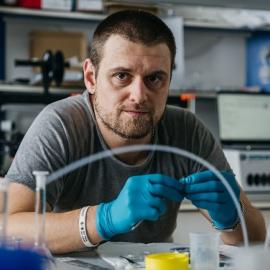Additive or subtractive manufacturing: Which is more powerful to improve the catalytic stability of carbon dioxide electroreduction?
Electrochemical reduction of carbon dioxide allows its conversion to fuels and industrial chemicals at ambient conditions. Gas diffusion electrodes are viewed as the most promising catalyst systems for this process, allowing high reaction rates to be achieved. However, the long term operation of these electrodes is complicated by the electrolyte intrusion to their interior porous structures (“flooding”). The proposed project will apply additive and subtractive manufacturing (stereolithographic 3D printing and mechanical/laser perforation) to construct gas diffusion electrodes with tailored electrolyte draining microfluidic channels, with the goal of devising stable catalyst systems. We will seek fundamental understanding of relationships between material and structural characteristics of gas diffusion electrodes and the stability of their catalytic response at industrial current densities. Electrolyte transport through microfluidic channels and flooding of micropores will be explored by newly developed experimental approaches and modeled by finite element method simulations.
RNDr. Kolivoška Viliam Ph.D., MBA
 jh-inst.cas.cz
jh-inst.cas.cz




